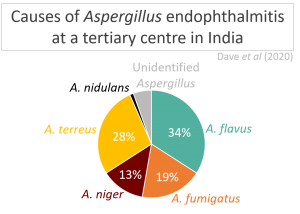Submitted by Aspergillus Administrator on 8 August 2012
This study chose 289 new borne children who have at least one parent that reacts strongly to a panel of allergens commonly found in the air (meadow fescue, timothy, white oak, maple, American elm,
red cedar, short ragweed, Alternaria species, Aspergillus fumigatus, Penicillium species, Cladosporium species, cat, dog, German cockroach, and house dust mite).
Such children can be defined as high risk for developing allergy and asthma.
The researchers then collected and examined dust samples collected using a standardised protocol when the children were aged 8 months.
Host, environmental exposure, and home characteristics were evaluated included a history of parental asthma, race, sex, upper and lower respiratory tract symptoms, season of birth, family income, cigarette smoke exposure, air conditioning, use of a dehumidifier, presence of carpeting, age of home, and visible mold at age 1 year and child’s positive skin prick test response to aeroallergens and molds at age 7 years.
Each child was medically examined at age 7 for asthma based on patient reported symptoms and objective measurements of lung function.
Asthma was diagnosed in 24% of the children examined at age 7 and this diagnosis was positively correlated with the presence of only 3 mould species: Aspergillus ochraceus, Aspergillus unguis and Penicillium variabile. All 3 species are far more common in homes damaged by moisture compared with dry homes.
Interestingly only 12% of the asthmatic children gave a positive test to mould allergens in the skin prick test, suggesting that the test is not detecting all those it should (allergens for these 3 species are not included in commercial testing kits as standard) or moulds are involved in increasing the incidence of asthma via a non-allergic mechanism.
The findings of this paper support the increasing body of evidence that suggests that moulds and damp homes have a role in increasing the incidence of childhood asthma.
News archives
-
Title
Date



